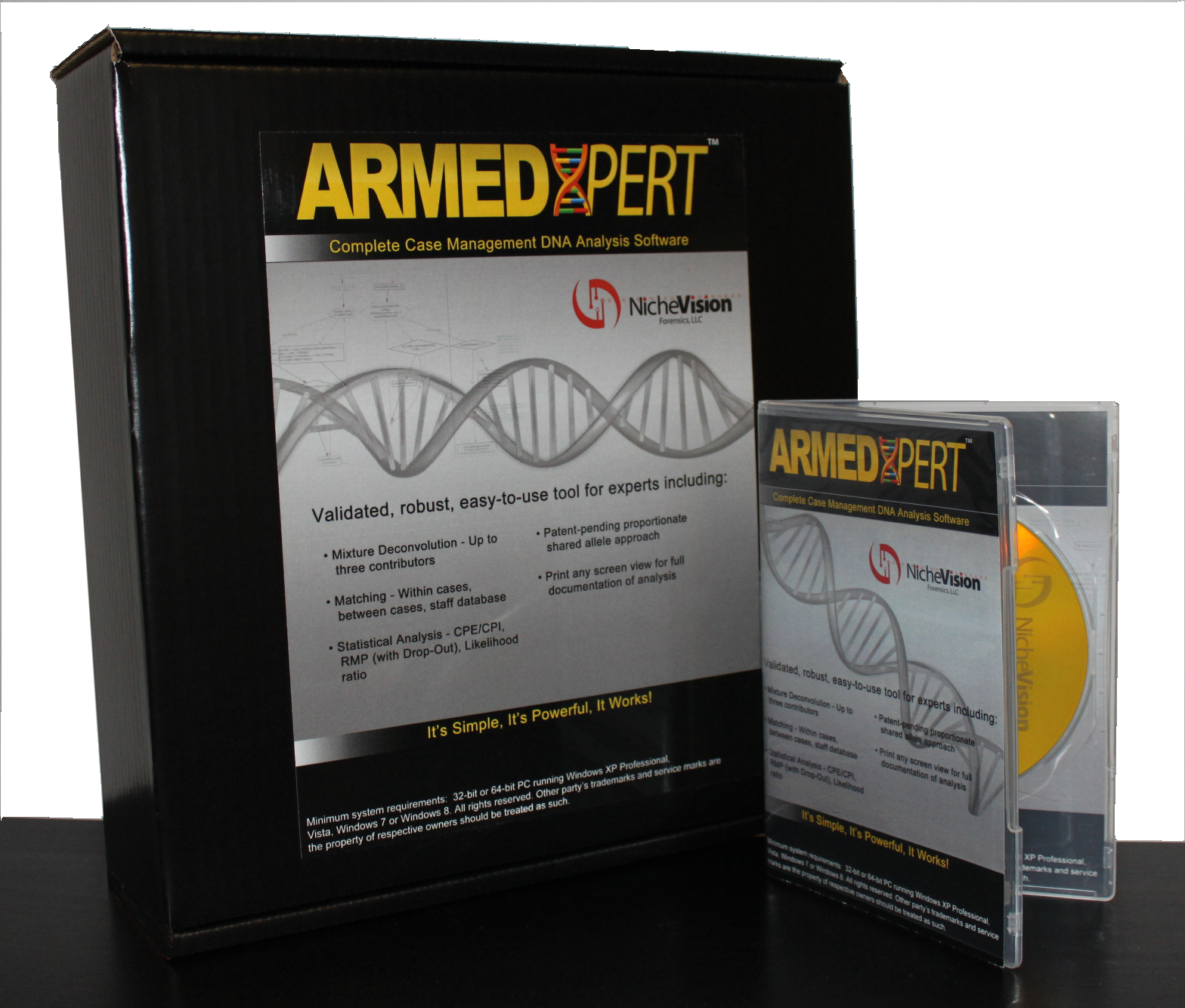USAMRMC Wins Excellence in Technology Transfer Award

The U.S. Army Medical Research and Materiel Command's Office of Research and Technology Applications, or Medical Technology Transfer Office, will receive recognition for the successful technology transfer of the ArmedXpert? DNA deconvolution software.
Forensic DNA analysis has come a long way, from DNA fingerprinting that began in the 1980s to DNA mixture deconvolution that scientists are tackling today.
The ArmedXpert product started at the U.S. Army Criminal Investigation Laboratory in Forest Park, Georgia. Scientist Tom Overson recognized the need in criminal investigations to separate individual DNA in biological samples that contain DNA from multiple sources.
Overson created a Microsoft Excel? spreadsheet and a series of macros, or computer instructions, to "deconvolute," or simplify, mixed DNA data.
Although one of the most difficult aspects of forensic DNA analysis today, the DNA mixture deconvolution technique has demonstrated itself as a critical capability for crime labs. Biological samples from assault cases often contain bodily fluid or tissue from both the victim and the perpetrator, and sometimes even parties unrelated to the crime, making it challenging to definitively link the DNA in the crime scene samples to each individual involved.
Overson's software-based solution enables analysts to extract usable data from DNA samples that had previously gone un-interpreted, leading to many convictions of the guilty and exonerations for the innocent.
The software automates calculations, provides documentation of each interpretation step performed and instantly performs matches, quality control checks and other functions. This invention reduces opportunities for transcription and math errors, allows examiners to clearly convey results in both written form and oral testimony during court proceedings and reduces the workload for lab analysts.
DNA examiners at the USACIL made extensive use of Overson's software because of its tangible effectiveness. The software evolved and grew as Overson added features requested by his colleagues.
The initiative to transfer the technology accelerated when Overson retired. The USACIL needed to find an outside vendor that would be able to provide ongoing support for the program and continue to develop it. The lab also wanted to commercialize it to provide other labs with the opportunity to use it.
Since the USACIL didn't have an ORTA to support these goals, the lab sought the assistance from the USAMRMC's ORTA.
The 2015 Federal Laboratory Consortium Award for Excellence in Technology Transfer credits the unique process of this particular transfer facilitated by USAMRMC's ORTA.
The USAMRMC's process began with enlisting the help of TechLink, a U.S. Department of Defense partnership intermediary. This partnership allowed the USAMRMC to carefully consider all of their options for companies interested in licensing the technology.
To ensure they chose the best company, TechLink and the USAMRMC decided to use a rare mechanism for solicitation, a timed offer.
"The timed offer allowed us to compare different proposals at the same time and to be competitive and take the company that was most important to us," said Acting Director Barry Datlof.
With the timed offer's encouragement for applicants to submit their best offers and TechLink's broad marketing efforts, NicheVision Forensics emerged as the clear winner for its capabilities, creativity and responsiveness.
"This deal was unique for several reasons. First, it wasn't our home lab that invented the product. Second, we did a timed offer. Third, we licensed an Excel spreadsheet; it doesn't take a huge invention to make a difference in someone's life. And fourth, it was an excellent opportunity to bring the benefits of the product back into the criminal investigation lab for their use; we don't always get to do that," said Datlof.
Since the licensing agreement's signing in September 2010, NicheVision Forensics translated the program into a Windows application so Microsoft Excel would no longer be required to use it. The company released a beta version of the software in February 2011 and worked with analysts at the USACIL to validate and performance-check the software. In August 2011, NicheVision Forensics released the software commercially.
"ArmedXpert's tech transfer process was clearly designed for success; all parties involved collaborated to allow our development team to launch quickly after the transfer," said Luigi Armogida, NicheVision Forensics founder and CEO. "This close collaboration paved a path for the forensic community throughout the U.S. to adopt the software in their casework process."
Today, more labs use ArmedXpert than any other non-hardware-tied DNA mixture software on the market. Forensics labs all around the country at the city, county and federal levels are using ArmedXpert, validation of a true success story for the inventor, the USACIL and the USAMRMC's ORTA.
"Technology transfer is about making sure we protect our intellectual property and finding a company that can take it to market," said Datlof. "The inventor's job was to support the criminal investigators, and he came up with a good way to do that. But he needed to take the next step, and that's where technology transfer comes in."
Datlof and team are in the midst of planning what past experience promises to be a creative reception when the FLC presents the award to them April 29.
"We're proud of our many involved partners for bringing an important product to the forensics community and for allowing criminals and innocent people to go to the right place," said Datlof.














